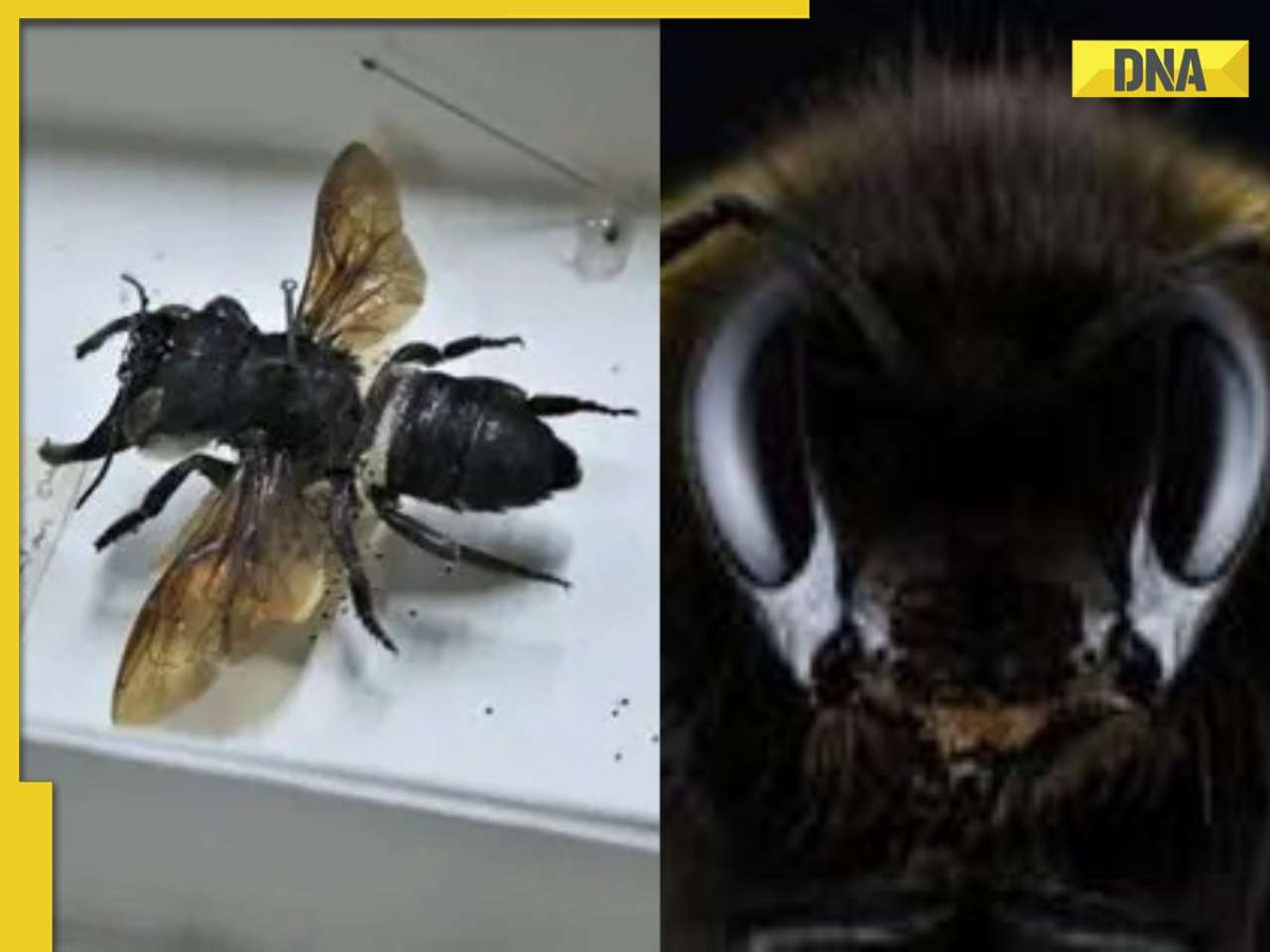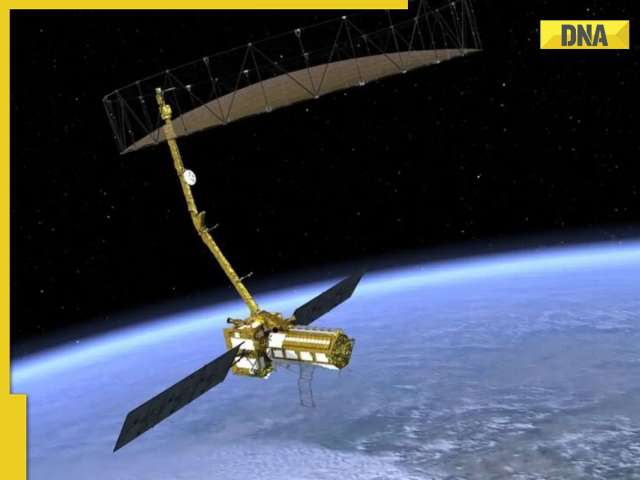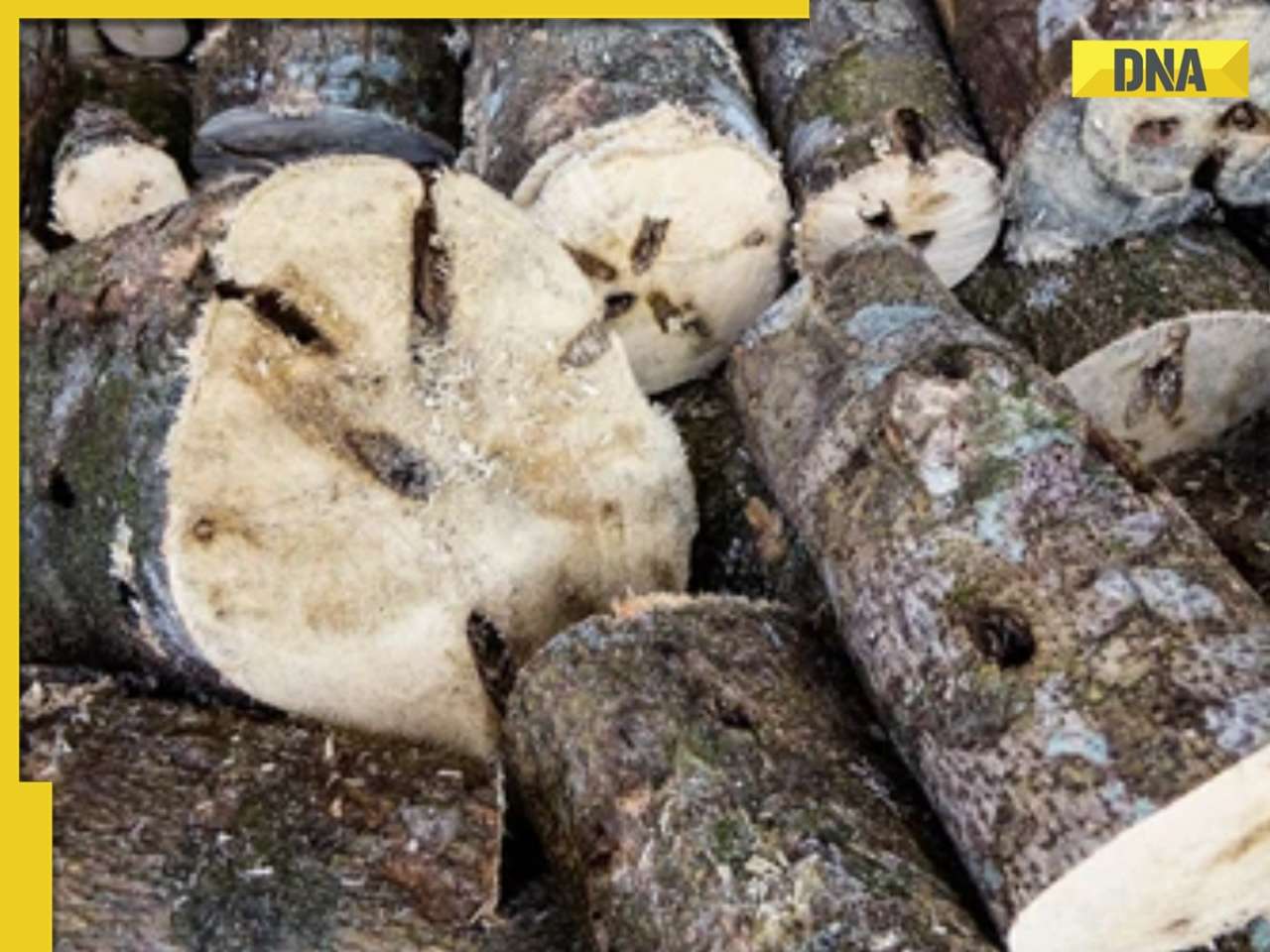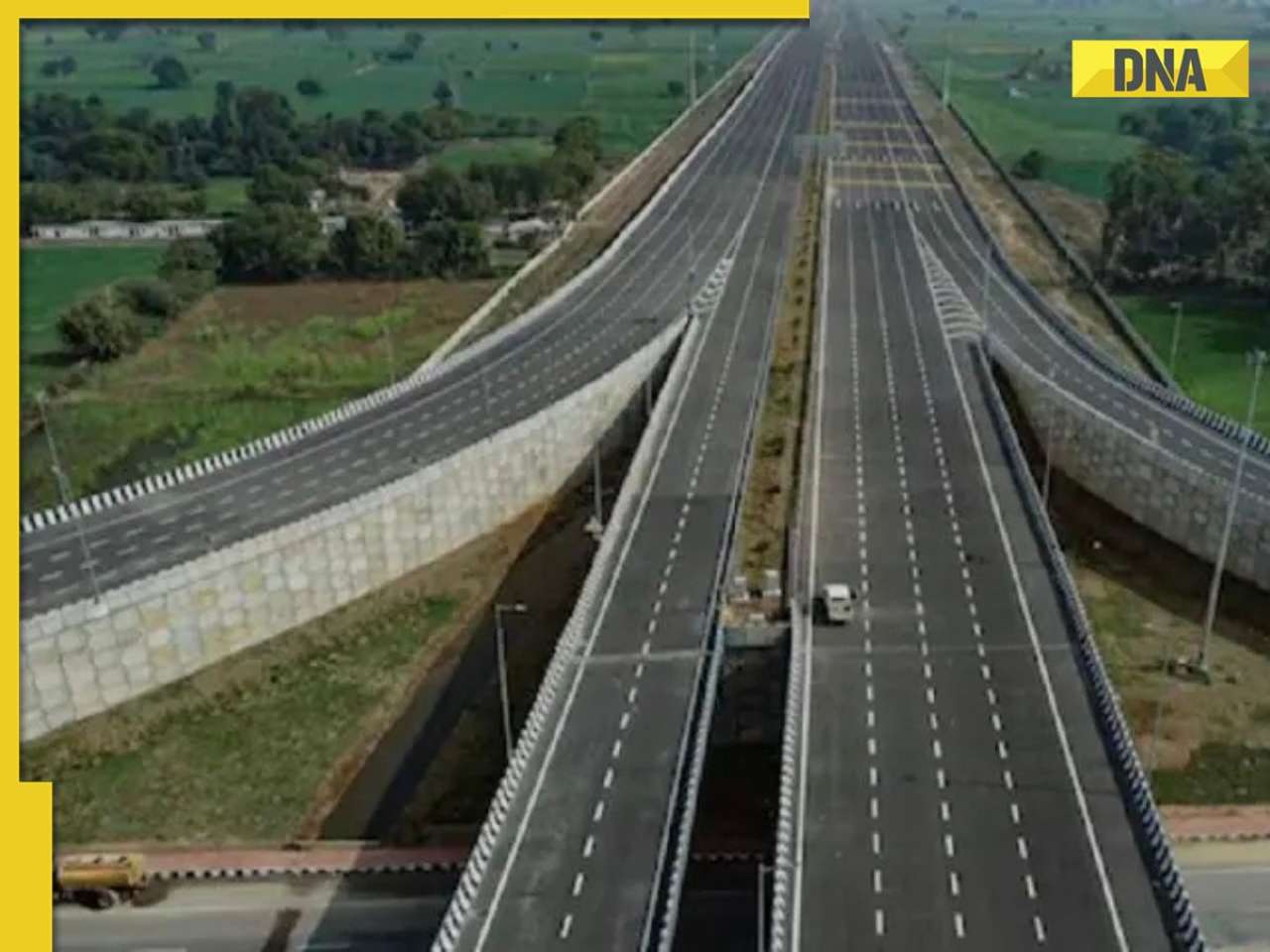A new study suggests a 9-mile-thick diamond layer lies beneath Mercury, potentially solving planetary mysteries
A 9-mile-thick diamond layer lies beneath Mercury
A recent study reveals that a thick layer of diamonds, possibly up to 9 miles thick, may exist deep beneath Mercury’s surface. While these diamonds are out of reach for mining, their presence could help unravel some of the planet’s long-standing enigmas.
According to the findings published on June 14 in the journal Nature Communications, Mercury might harbour a diamond layer hundreds of miles below its surface. This discovery could provide insight into the planet’s unusual composition and magnetic field.
Mercury has long puzzled scientists with its mysteries. Despite its small size and seemingly inactive geology, Mercury has a weak magnetic field. Moreover, NASA's Messenger mission found unusually dark patches on Mercury’s surface, identified as graphite, a form of carbon.
Yanhao Lin, a staff scientist at the Center for High-Pressure Science and Technology Advanced Research in Beijing and co-author of the study, was intrigued by Mercury’s high carbon content. "It suggested something extraordinary happened inside the planet," he said in a statement.
Scientists believe Mercury formed similarly to other terrestrial planets, starting with the cooling of a hot magma ocean rich in carbon and silicate. Initially, metals within this ocean coagulated to form a central core, while the remaining magma crystallised into Mercury’s mantle and crust.
For years, researchers assumed the mantle’s temperature and pressure allow carbon to form graphite, which then floated to the surface. However, a 2019 study indicated that Mercury’s mantle might be deeper than previously thought, significantly increasing the pressure and temperature at the core-mantle boundary. This could create conditions for carbon to crystallise into diamonds.
To explore this possibility, researchers from Belgium and China, including Lin, created chemical mixtures similar to Mercury's early magma ocean. They included iron, silica, carbon, and various amounts of iron sulphide, simulating the sulphur-rich nature of Mercury's present-day surface.
Using a multiple-anvil press, the team subjected these mixtures to extreme pressures and temperatures, mimicking conditions deep within Mercury. They also used computer models to precisely measure the pressure and temperature at Mercury's core-mantle boundary, determining the stability of graphite and diamond.
The experiments revealed that minerals like olivine likely formed in the mantle, consistent with previous studies. However, adding sulphur to the mix caused it to solidify only at much higher temperatures, conditions more conducive to diamond formation. Computer simulations indicated that under these conditions, diamonds may have crystallised as Mercury’s inner core solidified and floated up to the core-mantle boundary. The simulations suggested a diamond layer with an average thickness of about 9 miles.
While mining these diamonds is impractical due to Mercury’s extreme conditions and the depth of the diamonds (about 300 miles below the surface), their existence may explain the planet's magnetic field. The diamonds could facilitate heat transfer between the core and mantle, creating temperature differences that cause liquid iron to swirl and generate a magnetic field, Lin explained.
This discovery could also shed light on the evolution of carbon-rich exoplanets. “The processes that led to Mercury’s diamond layer might have occurred on other planets, potentially leaving similar signatures,” Lin noted.
Further clues may come from BepiColombo, a joint mission of the European Space Agency and the Japan Aerospace Exploration Agency, which is set to begin orbiting Mercury in 2025.
 Good news for Noida residents: Jewar Airport to be connected with new 3 km route, cut travel time for thousand coming from...
Good news for Noida residents: Jewar Airport to be connected with new 3 km route, cut travel time for thousand coming from... World’s largest bee is called ‘Flying bulldog’, does not produce honey, it’s size is..., found in...
World’s largest bee is called ‘Flying bulldog’, does not produce honey, it’s size is..., found in... Little Pepe (LILPEPE) Presale Raise Crosses $8,825,000 as Sixth Stage Ends Faster Than Predicted
Little Pepe (LILPEPE) Presale Raise Crosses $8,825,000 as Sixth Stage Ends Faster Than Predicted Will Nitish Kumar replace Jagdeep Dhankhar? BJP may pull him out to beat anti-incumbency in Bihar polls as...
Will Nitish Kumar replace Jagdeep Dhankhar? BJP may pull him out to beat anti-incumbency in Bihar polls as... Not Mumbai, Delhi, Bengaluru, Chennai, Kolkata, Srinagar; Ed Sheeran says this Indian city is his favourite, it is located in...
Not Mumbai, Delhi, Bengaluru, Chennai, Kolkata, Srinagar; Ed Sheeran says this Indian city is his favourite, it is located in... Glutathione boost to skin naturally with spinach, avocados and more
Glutathione boost to skin naturally with spinach, avocados and more Warren Buffett's 5 success lessons every young Indian should know
Warren Buffett's 5 success lessons every young Indian should know What are risks of taking Vitamin D shots? Know how it links to blocked arteries
What are risks of taking Vitamin D shots? Know how it links to blocked arteries NASA shares 7 majestic images of 'Star War' planets in solar system
NASA shares 7 majestic images of 'Star War' planets in solar system Why do you lose your temper after drinking alcohol or eating meat? Know 7 ways to manage it
Why do you lose your temper after drinking alcohol or eating meat? Know 7 ways to manage it Iphone Fold: Apple’s iPhone Fold Could Solve Samsung’s Biggest Foldable Problem | Samsung Z Fold 7
Iphone Fold: Apple’s iPhone Fold Could Solve Samsung’s Biggest Foldable Problem | Samsung Z Fold 7 Trump News: Congress Seeks Answers On Trump's Alleged Mediation In Operation Sindoor
Trump News: Congress Seeks Answers On Trump's Alleged Mediation In Operation Sindoor Odisha News: Minor Burnt To Death In Puri Family Reveals Shocking Attack Details | Puri News
Odisha News: Minor Burnt To Death In Puri Family Reveals Shocking Attack Details | Puri News Odisha News: Minor Girl Burnt By 3 Men Days After Balasore Self-Immolation | Puri News
Odisha News: Minor Girl Burnt By 3 Men Days After Balasore Self-Immolation | Puri News Saiyaara: Who Is Ahaan Panday, Ananya’s Cousin, To Debut In YRF’s Mohit Suri Love Story
Saiyaara: Who Is Ahaan Panday, Ananya’s Cousin, To Debut In YRF’s Mohit Suri Love Story Bryan Johnson shutting down his wellness company Blueprint? Millionaire founder says, 'I don't need...'
Bryan Johnson shutting down his wellness company Blueprint? Millionaire founder says, 'I don't need...' Deepinder Goyal gets richer by Rs 2348 crore as Zomato parent Eternal shares rise by...; net worth reaches Rs...
Deepinder Goyal gets richer by Rs 2348 crore as Zomato parent Eternal shares rise by...; net worth reaches Rs... Maruti Suzuki's e Vitara set to debut electric market at Rs..., with range of over 500 km, to launch on...
Maruti Suzuki's e Vitara set to debut electric market at Rs..., with range of over 500 km, to launch on... Mukesh Ambani, Nita Ambani fan of this special sweet, private helicopters sent to get it from UP village, it's name is...
Mukesh Ambani, Nita Ambani fan of this special sweet, private helicopters sent to get it from UP village, it's name is... Big move by Ratan Tata-owned company, acquires 67% stake in this UAE-based brand for Rs 160000000, its name is...
Big move by Ratan Tata-owned company, acquires 67% stake in this UAE-based brand for Rs 160000000, its name is... From CarryMinati to Nischay Malhan: Top 5 Indian gamers who earn in crores
From CarryMinati to Nischay Malhan: Top 5 Indian gamers who earn in crores NISAR satellite launch 2025: Why it is NASA-ISRO’s biggest Earth mission?
NISAR satellite launch 2025: Why it is NASA-ISRO’s biggest Earth mission? Meet men behind Saiyaara’s hit title track, who resigned civil engineering jobs to pursue music, convinced parents to go to Mumbai for 14 days to...
Meet men behind Saiyaara’s hit title track, who resigned civil engineering jobs to pursue music, convinced parents to go to Mumbai for 14 days to... Not MS Dhoni, Hardik Pandya, Rohit Sharma but THIS Indian cricketer has record-breaking followers on Instagram, he is...
Not MS Dhoni, Hardik Pandya, Rohit Sharma but THIS Indian cricketer has record-breaking followers on Instagram, he is... Kajol and Twinkle Khanna set to host 'Two Much...': A look at other B-town actresses who owned talk show game
Kajol and Twinkle Khanna set to host 'Two Much...': A look at other B-town actresses who owned talk show game Will Nitish Kumar replace Jagdeep Dhankhar? BJP may pull him out to beat anti-incumbency in Bihar polls as...
Will Nitish Kumar replace Jagdeep Dhankhar? BJP may pull him out to beat anti-incumbency in Bihar polls as... Good news for Olympic winners as Delhi govt hikes cash awards, gold medallist to get Rs…
Good news for Olympic winners as Delhi govt hikes cash awards, gold medallist to get Rs… How did Jagdeep Dhankhar become most controversial vice president? About Sonia, Rahul, SC, RSS, he said...
How did Jagdeep Dhankhar become most controversial vice president? About Sonia, Rahul, SC, RSS, he said... Big tension for Pakistan, China, Indian Army receives first batch of Apache helicopters, it can carry..., is capable of delivering...
Big tension for Pakistan, China, Indian Army receives first batch of Apache helicopters, it can carry..., is capable of delivering... Jagdeep Dhankhar resigns as Vice President: Know how much pension, what facilities will he get? Who will handle his duties now?
Jagdeep Dhankhar resigns as Vice President: Know how much pension, what facilities will he get? Who will handle his duties now? Maruti Suzuki's e Vitara set to debut electric market at Rs..., with range of over 500 km, to launch on...
Maruti Suzuki's e Vitara set to debut electric market at Rs..., with range of over 500 km, to launch on... This is world’s most expensive wood, cost of 1kg wood is more than gold, its name is..., is found in...
This is world’s most expensive wood, cost of 1kg wood is more than gold, its name is..., is found in... This luxury car is first choice of Indians, even left BMW, Jaguar, Audi behind in sales, it is...
This luxury car is first choice of Indians, even left BMW, Jaguar, Audi behind in sales, it is... Kia India unveils Carens Clavis: Check features, design changes, price and more; bookings open on...
Kia India unveils Carens Clavis: Check features, design changes, price and more; bookings open on... Tesla CEO Elon Musk launches most affordable Cybertruck, but it costs Rs 830000 more than older version, it is worth Rs...
Tesla CEO Elon Musk launches most affordable Cybertruck, but it costs Rs 830000 more than older version, it is worth Rs...




)
)
)
)
)
)
)
)
)
)
)
)
)
)
)
)











